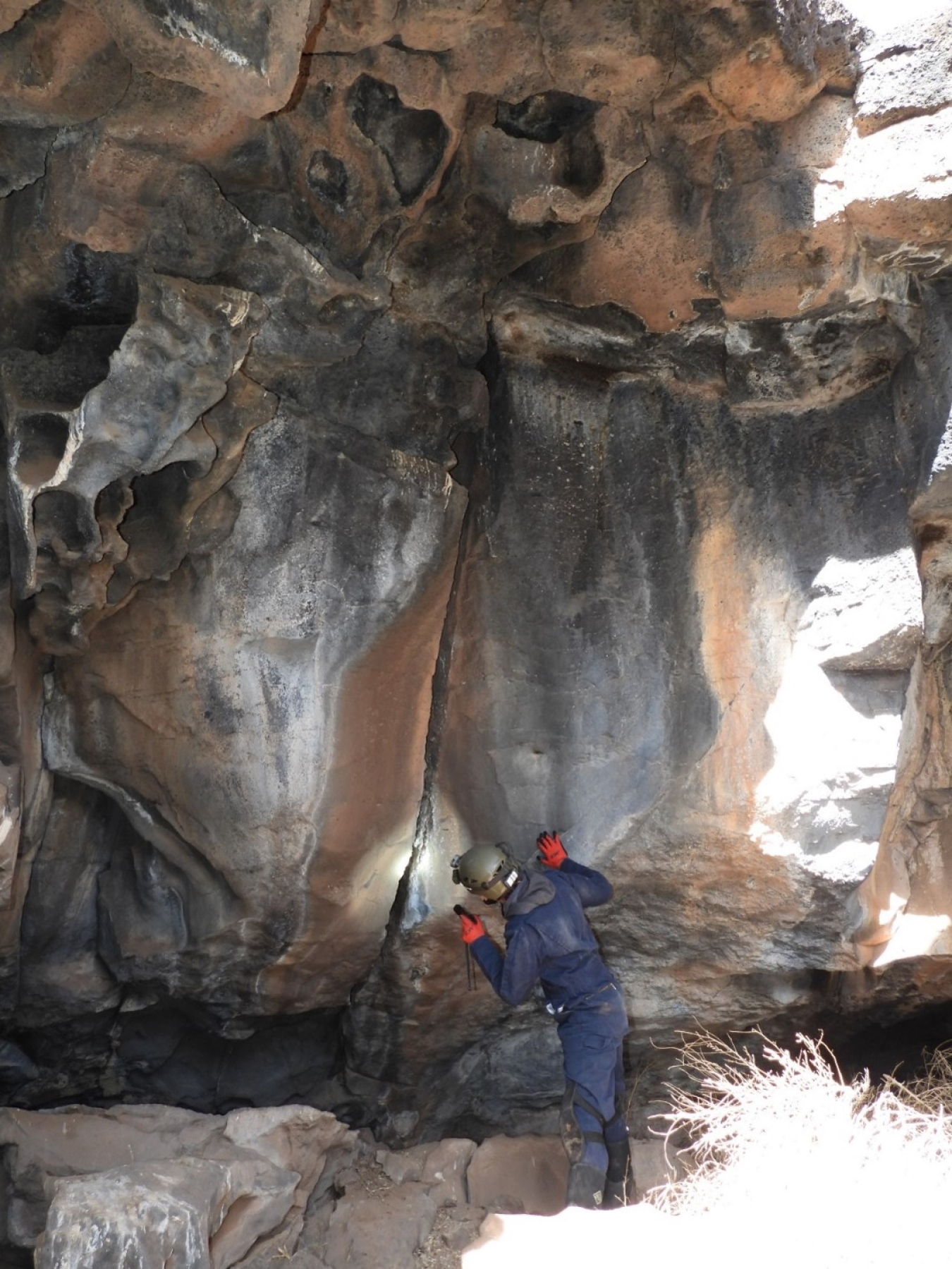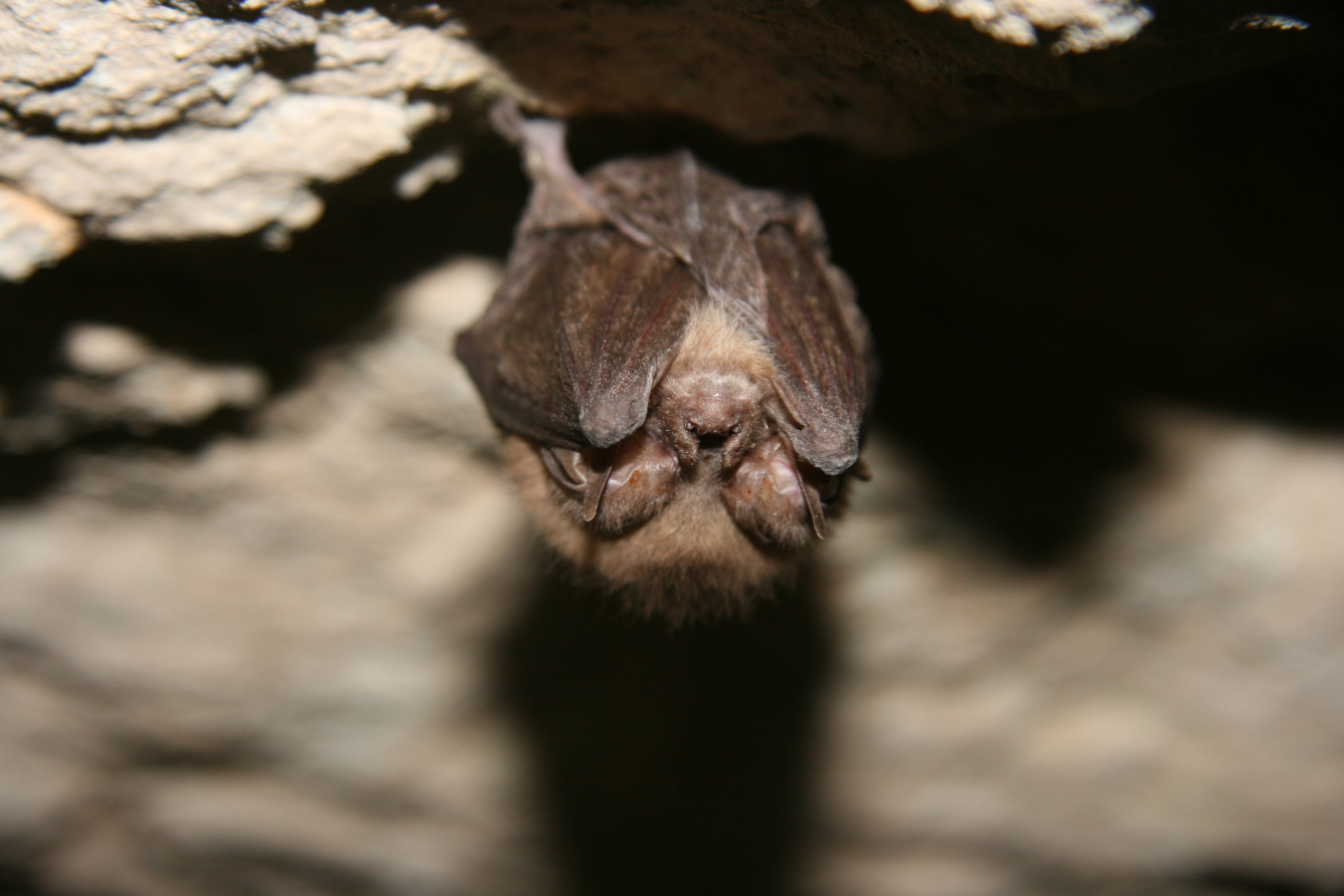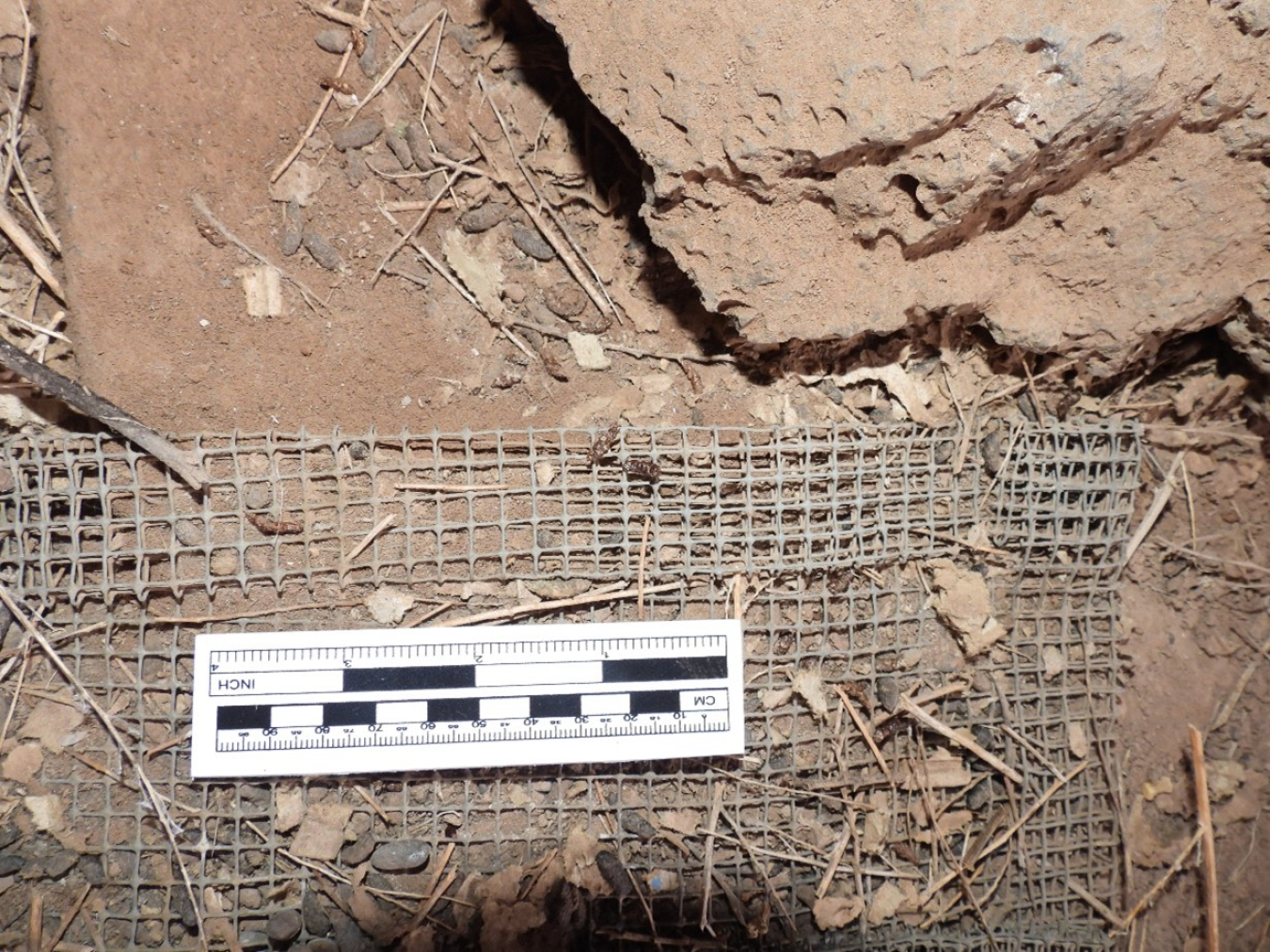Earlier this year, partners collaborated on a biological survey of potential habitat in New Mexico
October 18, 2024
In Bluewater Cave, BCI Subterranean Specialist Kathleen Slocum thoroughly inspected every available crack within the cave feature to look for roosting bats.
(BCI photo by Myriam Bishop)
In 2024, the Office of Legacy Management (LM) along with Bat Conservation International (BCI) completed an assessment of surface and underground areas to determine the presence of bat habitat and bat species at LM’s Bluewater Disposal Site in New Mexico.
Understanding species composition is a crucial part of LM’s work for safeguarding the environment and promoting biodiversity. Bats and their ecosystems face threats from forest fires, droughts, and diseases such as white-nose syndrome, which is why LM teamed up with BCI in 2020 to protect these important pollinators.
BCI, founded in 1982, has grown into a globally recognized conservation organization dedicated to ending bat extinctions. Over the past four years, BCI has assisted LM with several sites, including abandoned mine sites in LM’s Defense Related Uranium Mines (DRUM) Program. This year, BCI surveyed areas at LM’s Bluewater site to identify potential bat habitat, determine the presence of specific species, and outline next steps for LM to further support these pollinators on-site.

BCI surveyed a small cave on the property and other landscape features such as basalt lava tube features, sandstone rock outcrops, blister caves, and dead trees. During the assessment, BCI found guano in basalt deposits and collected samples. Two samples showed the presence of Townsend’s big-eared bat (Corynorhinus townsendii) and long-eared myotis (Myotis evotis). BCI also collected many more guano samples from a blister cave, hoping to rule out the presence of a fungus that leads to white-nose syndrome in bats, a fatal disease specific to our fuzzy, flying friends.
All samples analyzed for white-nose syndrome were determined to be negative and impacts to bats at the Bluewater site are unlikely due to the environmental conditions and marginal habitat for winter-roosting bats.
“Due to the physical aspects of the cave, the bats are relatively exposed to the outside weather and predators. The cooling cracks, which are used for roosting, are not deep enough to provide protection from weather in the winter and other potential predators,” said LM Beneficial Reuse Manager Diana Kamenel Trettin.

Though almost imperceptible, several pellets of guano were found in a small cluster on this piece of metal mesh. They were collected for genetic sampling.
(BCI photo by Myriam Bishop)
“The good news is that the bats that do use Bluewater for roosting are well protected from the public and other threats that occur on publicly accessible lands,” Kamenel Trettin said.
With the surrounding landscape changes around Bluewater and the threat of climate change, bats could potentially use this area as a refuge in the future.
“BCI provided us with a lot of great recommendations on how to support bat foraging habitat and water resources at the site,” said LM Site Manager Nicole Olin. “These include focusing on ways to increase food and water supplies at the site. This would not only help bats that roost at Bluewater but provide further support for surrounding wildlife.”
“We are going to take BCI’s recommendations into consideration and we have already installed a wildlife water drinker to support these crucial pollinators,” Kamenel Trettin added.

